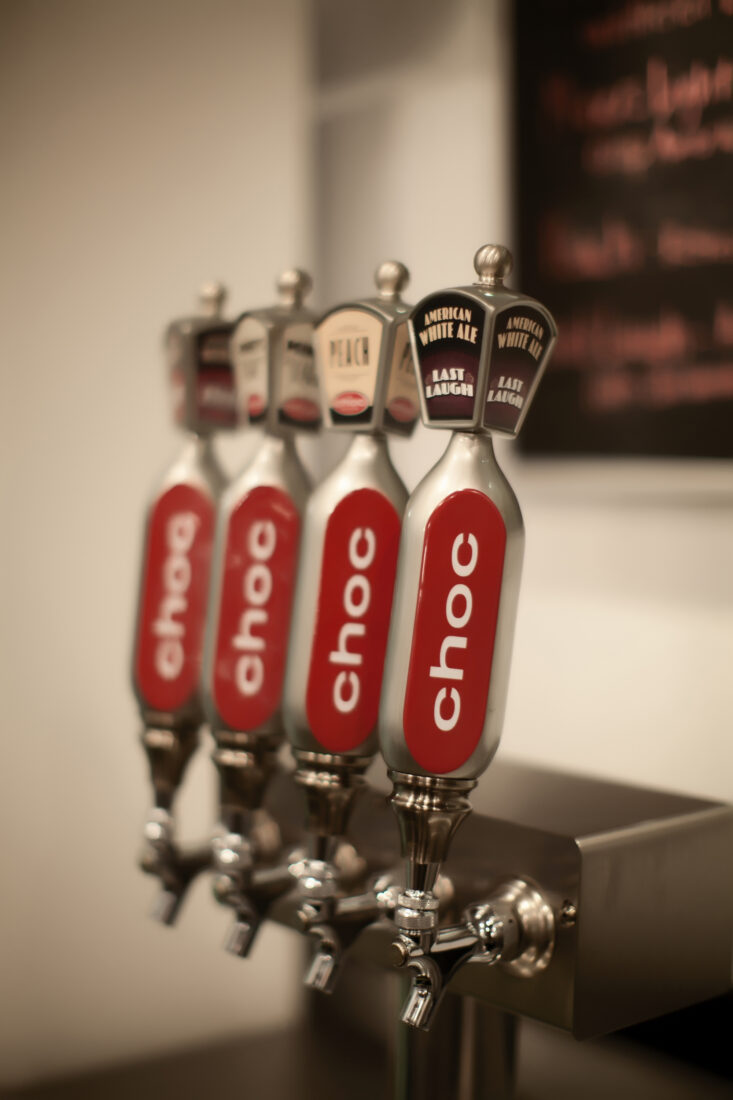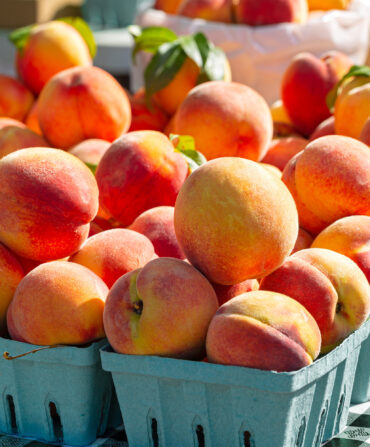Zach Prichard is heir to an Oklahoma brewing dynasty: He owns and operates Prairie Artisan Ales, the state’s largest brewery, which distributes signature farmhouse ales and world-famous imperial stouts to forty states, Europe, South America, Asia, and Australia. He is also a fourth-generation Oklahoma beer maker—an even more extraordinary feat considering the state legislature didn’t legalize brewpubs until 1992.

Prior to that, there hadn’t been a commercial brewery in Oklahoma since 1971. And the practice of homebrewing has only been officially permitted in the Sooner State since 2010. “We didn’t start legally making beer until 1994—I was eleven,” Prichard says. “So, the beer was more part of the history and the story than the day-to-day.”
It’s fitting Prichard distinguishes the story of his beer-saturated bloodline from the actual history—because there is a difference. The story goes that Prichard’s great-grandfather, Pete, was injured in the coal mines and unable to work. Out of sheer boredom, he began brewing beer in his basement in the tiny mining boomtown of Krebs, Oklahoma. After stumbling across a beer recipe passed down from the Choctaw Indians who were forcibly relocated to those prairielands by the U.S. government in the 1830s, he crafted his own version, called the homebrew “Choc beer,” and sold it to wash down the homemade Italian food he served to miners, first out of his own kitchen and then out of the restaurant he opened in 1925, Pete’s Place, which became a Krebs institution and the capital of the Prichard brewing empire.

That’s the myth. The real history is, of course, far more complicated. It’s still very much a tale of Prichard ingenuity, enterprise, and tradition. But it’s also much bigger than that. “Choc beer” isn’t just one family’s secret recipe, but a blanket term for a bevy of homebrews that bubbled from the basements, barns, and garages throughout Krebs and surrounding Pittsburg County. The beverage was a means of sustenance in a hardscrabble plains existence, a comfort after a long shift in the mines, and a libation to be shared among neighbors in times of prosperity and hardship. And while the brew acted as a social lubricant within the community, it also came to bond local tipplers and practitioners together against an outside world that viewed both them and their drinking traditions as societal ills.
More than anything, this is a yarn of disparate Old World customs gradually meeting and meshing on the frontier of the New World to create a uniquely American institution. The true story of Choc beer is the story of Krebs, Oklahoma. It’s an immigrant story.
* * *
Prichard’s father, Joe, doesn’t remember his first taste of beer. His childhood was awash in the stuff; the first drop of Choc to touch his lips didn’t register as an event. What he does vividly recall is helping his grandfather bottle the brew in the basement of Pete’s Place in the 1960s. As a kid, he’d line up the bottles on the floor, carefully filling each one by syphoning the grainy substance from the large vats. Then he’d add a teaspoon or so of table sugar to each bottle, triggering the natural bubbling process before capping them off to let the beer age and condition in the sealed brown glass.
If the process sounds unscientific, it was. In his 2013 book A Culinary History of Pittsburg County: Little Italy, Choctaw Beer and Lamb Fries, the Oklahoma City food columnist Dave Cathey writes that one family’s recipe for Choc beer was to take slow-cooked barley and hops, tie them off in a muslin cloth (other families might use a pillowcase or cheese cloth) with a cob of corn or some rice for flavoring, dip the sack in boiling water, pour the liquid in a crock to cool before adding sugar and yeast, cover it with a pillowcase for a few days, and “listen” for the yeast to stop working, indicating it was ready to bottle.
The Choc grain bill, a beer’s base recipe, was likewise fluid depending on what ingredients the maker had on hand. In an 1894 report to the Bureau of Indian Affairs detailing the liquor problems in Choctaw Nation, an Indian agent described Choc as a “compound of barley, hops, tobacco, fishberries [which are toxic], and a small amount of alcohol.” Nearly a century later, a 1971 recipe lists barley, hops, sugar, and yeast with optional rice, oats, mash, apples, peaches, or raisins. Like any experienced moonshiners, Choc brewers would use pretty much any fermentable sugar they could find in the wild, in the garden, or eventually at the grocery store.
It’s no wonder, then, that Choc has defied definition through the decades. “Unless you’re a big brewery with all the technology, no two batches of beer are exactly the same,” Joe says. “Some Choc beer was better than others; some batches were better than others.”
From a cultural standpoint, this haphazard approach to brewing makes sense. Unlike the Polish, Czech, German, and Irish settlers who brought a long and storied beer-brewing tradition with them to other parts of this region, the Italians of Krebs were generally a wine-making people. Unlike the nearby Ozark plateau, where other Italian emigres found that grapevines thrived, all that seemed to grow in the prairieland in any abundance was wheat. And unlike the Apache of Arizona who made a beer-like beverage out of corn called tiswin, the Choctaws were never known to brew anything resembling beer.
“There was no real science to brewing Choc; they were doing it all with a blindfold on,” says Cathey, who spoke to dozens of Pittsburg County practitioners and pored over newspaper and library archives to research his book. “The Choctaws certainly didn’t come up with it. It was only called that because it was in Choctaw Territory.”
So where did these Italian immigrants turned Sooner coal miners learn to brew Choc?
No one is really sure. Cathey believes he may have found a clue in a journal written by a Belgian monk who was traveling across the U.S. coal belt in the mid-1800s. He was essentially writing back to the people of Belgium, describing in detail many of the things he observed in these mining communities—including the brewing of beer.
“That little piece of information was as close as we could ever come to how those people were making beer the way they were,” Cathey says. “But I’ve had Choc beer—real Choc beer—and there’s no beer like it. With its untamed yeast, it was closer to a Belgian ale. It confirmed my suspicions that the Belgians helped make it.”
Belgian brewers also distinguished themselves by letting yeast evolve in the bottle for a secondary fermentation—not unlike young Joe Prichard adding table sugar before capping off his grandpa’s Choc. “Nobody knows what’s true or not,” Joe says. “Probably a Belgian monk or a German taught the immigrants here. Somebody brought the knowledge.”
* * *
While no one can be sure exactly where and when the denizens of Krebs learned to brew, one thing is certain: Since its inception and for most of its existence, brewing Choc beer has been a collective act of defiance.
The first Choctaw arrived on this land at the end of the Trail of Tears in 1831, and three years later, it became federally protected Indian Territory. Congress passed legislation banning the sale, possession, and manufacture of alcohol on Indian lands—primarily based on the stereotype of the drunken Indian and the accompanying myth that Native Americans were somehow physiologically unable to handle their booze. But while the Choctaw may not have had a tradition of brewing or distilling spirits, that certainly didn’t stop them from trading for alcohol with European homesteaders as they passed through.
Those federal laws were still in effect in the 1870s when coal beds were first discovered and commercially mined in and around Pittsburg County, attracting thousands of European settlers, including the Italians of Krebs. At the same time, a temperance movement was afoot in towns and cities across the nation. It was not a coincidence. While largely WASP teetotalers couched their cause in religion, virtue, and family values, decrying spiritous drink as the destroyer of families, much of the campaign against alcohol was thinly veiled racism against the recent wave of Italian, German, Irish, and other Catholic immigrants and their blue-collar drinking ways—especially on Sundays, often their only day off.
“Stories about Choc beer littered the newspaper archives from the time,” Cathey says. “Choc beer was always being blamed for anything that went wrong in that region. It was a way to blame immigrants. Even Carrie Nation came out to the coal mines.”
Popular anti-booze organizations like the Anti-Saloon League and the Women’s Christian Temperance Union became so powerful in the region that when the Union finally admitted Oklahoma in 1907, it entered as a dry state. And it would remain so throughout national Prohibition. Even after the state legislature legalized the sale of 3.2 percent beer in 1933, the same year federal Prohibition ended, the unlicensed brewing and possession of Choc continued to make the Prichards and their kind bootleggers and outlaws.
Not that it ever mattered to Pietro Piegari, who had arrived in Krebs with his family from San Gregorio Magno, Italy, in 1902. When Piegari went to work in the coal mines at age eleven, he officially changed his name to the Americanized Pete Prichard. A decade later, a cave-in nearly killed Pete, who escaped with a shattered leg that ended his mining career. So, he started making beer in his home—likely putting his own spin on what many of his neighbors had been doing for decades—and he never looked back.
In 1925, Prichard opened Pete’s Place, the Italian restaurant dishing out Isle-style portions of spaghetti, ravioli, lamb fries (breaded and parboiled testicles), and pints of (wink-wink) Choc that gradually made the eatery and the surname synonymous with the illicit substance over the next seventy years. “I don’t think Prohibition happened here,” Joe says. “I don’t know that they did a whole lot different before, during, or after Prohibition.”
* * *
It took a few decades, but the rest of the country eventually caught up with Krebs.
The Prichards and their neighbors continued their passive resistance to (read: ignoring of) increasingly outdated liquor laws in relative peace (Pete was the only Prichard ever arrested for possession of beer, serving a short prison sentence in 1932—local law enforcement and politicians all drank Choc, too). Meanwhile, elsewhere in the country, the practice of homebrewing began to bubble up once again as drinkers looked for alternatives to the Budweisers and Coors that had come to dominate the post-Prohibition landscape. In 1978, President Jimmy Carter essentially erased the fifty-year ban on homemade beer when he legalized homebrew at the federal level. And as hobbyist artisans got better and better at producing their homespun IPAs, stouts, and porters, they started to see a market for their wares. Looking to go pro, these homebrewers started pushing state and local governments to legitimize brewpubs. The craft beer revolution was afoot.
In 1992, Oklahoma joined the revolt. Joe Prichard, who had taken control Pete’s Place after his father stepped aside in 1984, was eager to make Choc legit. “My dad loves to drink beer,” Zach Prichard says. “He grew up with it as part of his family. Making it legitimately was always something he aspired to. He formalized the restaurant in a lot of ways and took it to the next level. A big part of that was just getting away from the illegal past of making beer. It’s a cool story, but that’s not how they wanted to live.”

Of course, if Choc was to be a viable commercial product, it had to be made adhering to industry standards and practices. In other words, Joe couldn’t just scale up his basement operation by using a bigger pillowcase. Instead, he enlisted local brewmaster Michael Lalli, who was old enough to have been steeped in the Choc tradition but young enough to know the modern approaches to brewing. The two set out to create beer with key characteristics of quintessential Choc that could be brewed consistently and would appeal to the thirsty masses. They landed on a Belgian-style wheat beer that they left unfiltered, giving it the appropriate cloudiness and fluffier mouthfeel of the classic Prichard homebrew. They also upped the carbonation and used a neutral American yeast instead of the traditional German ones. “I thought it was pretty close,” Joe says of the new version.
In 1994, Pete’s Place put the new Choc beer on tap. Within a decade, it had become the flagship can of Krebs Brewing Company (KBC), headed by Zach, which also put out several other styles of beer. In 2016, KBC bought the craft-beer phenom Prairie Artisan Ales brand that had been operating out of the Krebs facility since its inception.

Today, Choc beer has now become a mere footnote in the broader KBC/Prairie portfolio, which now skews more toward barrel-aged stouts, sweet-tart pastry sours, and even a few bottle-conditioned farmhouse ales. In fact, Choc is mostly only available in Pittsburg County. “I don’t think Zach sells much of it anywhere but here,” Joe says. “Not that he couldn’t. But he chooses not to. Choc and Pete’s Place and Krebs are inseparable.”
But just because Pittsburg County residents can pick up a can of Choc beer anytime they please doesn’t mean they’ve quite given up on making the stuff themselves. According to Cathey and the Prichards, the tradition of homemade Choc is alive and well in several basements and outbuildings in Krebs. In fact, Joe says he keeps a few bottles of homespun Choc in the fridge at home for weddings, funerals, or when he just wants a taste of home.
Garden & Gun has an affiliate partnership with bookshop.org and may receive a portion of sales when a reader clicks to buy a book. All books are independently selected by the G&G editorial team.








